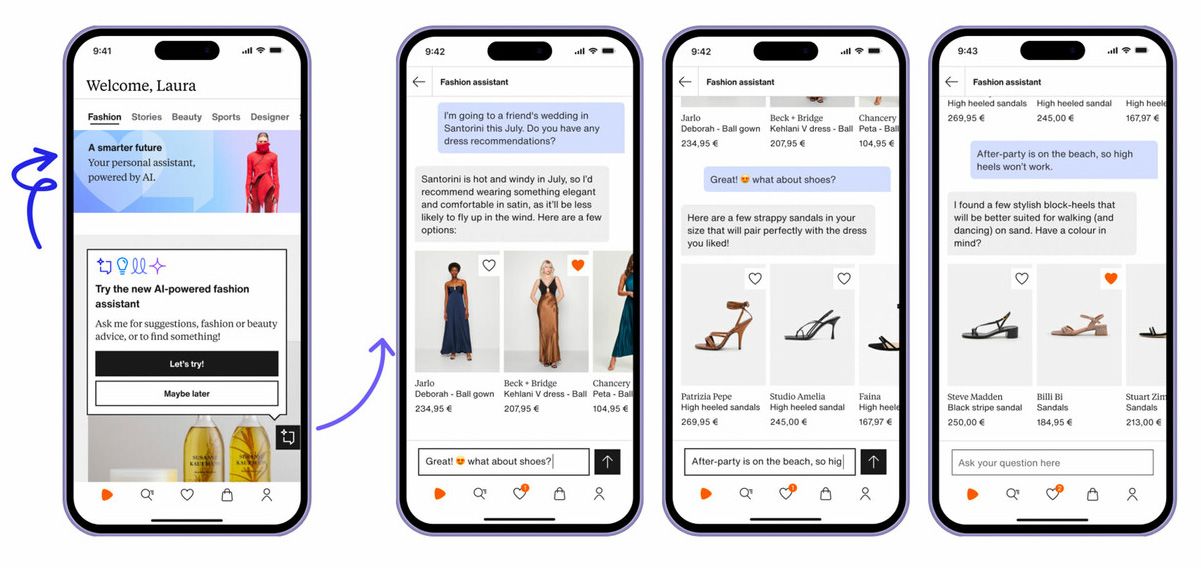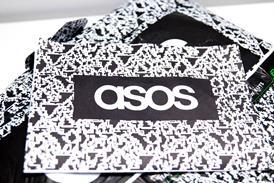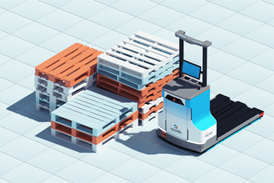Gen-AI
cheat sheet
for retailers
The tech trends to
watch out for in 2024

Generative AI has exploded into the public consciousness in the past 12 months and impacted every sector of retail. But as AI adoption picks up pace, how can retailers prioritise where to invest to leverage the technology’s full capabilities? Retail Week explores three trends to watch out for in 2024
AI was everywhere in 2023, and little may be set to change in 2024. Collins English Dictionary crowned AI its word of the year, ChatGPT reached 100 million users in just two months and few companies ended the year without dabbling in the technology at the very least.
Retailers across the board are using AI to improve efficiency, increase productivity, and boost customer experience and engagement – and most agree it is set to fundamentally change the way business is done.
But while retail has seen years of investment in traditional AI, from advanced data analytics and chatbots to warehouse automation, 2023 saw the rise of Generative AI (Gen-AI), with its ability to create new content – including text, images and video – that’s nearly indistinguishable from that created by humans.
As 2024 dawns, Gen-AI’s benefits continue to emerge and evolve. But with so many potential applications, what can retailers expect to see from AI in 2024 and how can they seize the opportunities? Here Retail Week explores the key trends to look out for in the months ahead.
For more insights into the key trends shaping retailers’ strategies, read PayPal’s latest Think Forward whitepaper series.
1. Personalisation gets easier

Personalisation – and the struggle to get it right – is not a new topic for retailers. Many have spent the last couple of decades trying to offer the right level of personalised experiences to customers, with the aim of boosting customer loyalty as well as the top line – and Gen-AI has the potential to do this at scale.
In April 2023, a Boston Consulting Group survey of more than 200 chief marketing officers across multiple sectors globally found that personalisation, implemented by 67% of the marketers surveyed, is already the top use case for Gen-AI solutions.
This comes at a time when consumers are also demanding greater personalisation. In a survey of 14,300 consumers and business buyers conducted by Salesforce between May and July 2023, 73% of global consumers said they expect better personalised experiences as technology advances, with dynamic pricing and adaptive interfaces as two potential uses.
How is Gen-AI supporting greater personalisation?

Mobile apps, in particular, are expected to benefit from Gen-AI and the pace of change will be fast. Marketing consultancy Gartner has predicted that 30% of new apps will use AI to drive personalised adaptive user interfaces by 2026, up from fewer than 5% today.
While much of this work will involve more effective use of data to make better recommendations, there are other – often more creative – ways to introduce personalisation to a retail offer using the technology.
At H&M, for instance, a new AI tool launched in October 2023 enables consumers to mock up and produce custom clothing. The software, designed to reduce obstacles and empower and enable creators to express themselves, lets users type in design ideas, from which the AI creates a custom artwork; this is then printed and fulfilled through Creator Studio, H&M Group’s on-demand merchandise printing service.
Fashion is benefiting from greater personalisation elsewhere, too. For instance, AI-powered tech is also helping improve customers’ confidence in the fit of garments. Google’s Gen-AI-powered try-on service, launched in June 2023, is offered as part of its search functionality. The tool allows shoppers to choose from 80 real models in a range of sizes, body shapes and ethnicities, with garments digitally and photo-realistically portrayed on the model’s still image.
The AI uses the original brand’s supplied imagery, combined with photographs of real models to interpret garment fit. The feature is available to any retailer set up in Google’s Merchant Centre and offers an alternative approach to other try-on tools, which often digitally dress AI-generated fictional models rather than real people.
2. Product discovery takes centre stage

Closely related to personalisation is the ever-growing importance of helping shoppers find exactly what they want and inspiring them with new product recommendations. Product discovery is an ongoing challenge for online shoppers, who are often besieged with choice. To combat this decision fatigue, retailers are turning to Gen-AI.
Natural language chat interfaces, which allow users to interact with systems and websites through conversation, are getting better at handling complex queries, such as those relating to fit, or finding items for specific environments or events, such as work or weddings. Destined to improve the customer experience, the hope is that Gen-AI tools will help reduce return rates as well, with more purchases being exactly right for shoppers the first time.
Zalando’s ChatGPT-powered fashion assistant, announced in April 2023, was among the first to help shoppers with specific queries that take into account elements such as occasion, geography and weather – like finding an outfit for a wedding in Santorini in July.

Zalando’s fashion assistant helps consumers with specific queries
Zalando’s fashion assistant helps consumers with specific queries
Mango’s conversational platform, Lisa, launched in October 2023, shows how similar technology is being used in-house. The platform is trained to collaborate with other AI to identify upcoming consumer trends and co-create prints, fabrics and garments for design and product teams. This generation of new ideas and acceleration of product development offers new inspiration for how retailers can help teams continue to produce new on-trend items and then help customers find them.
Taking it one step further, cosmetics brand Iconic London trialled Nibble, an AI-powered negotiator bot, on its website in July 2023. The service allowed customers to negotiate prices for the items in their baskets and, while discounts of up to 15% were available, most customers accepted single-digit savings. Average order values increased by 50% during the trial period, with most shoppers reaching a deal within 45 seconds, according to Nibble.
Discount negotiation tools offer an interesting direction for retailers looking to quietly sell excess inventory without the need for broadcasting blanket discount Sales or for sellers keen to boost basket size and conversion rates.
3. Gen-AI remains a trusted
virtual co-pilot

AI technology has already proven itself to be a reliable and efficient artificial assistant, enhancing productivity, eliminating repetitive tasks and freeing teams for creative and value-adding work.
In September 2023, Amazon launched an AI tool to help write product titles and descriptions. AI bots learn to infer product information from diverse sources of information, as well as their own latent knowledge and logical reasoning, to enrich product listings and help customers find the right products more easily.
At eBay, a Gen-AI tool uses photos uploaded by sellers to write detailed, accurate and in-depth product descriptions with the aim of attracting more buyers. The tool was also introduced in September 2023 to streamline the process of uploading products, in part to help new sellers who reported feeling overwhelmed when trying to create competitive listings.
Originally launched in 2021 as a data-driven tool to provide better value to customers and co-workers, Ikea’s AI chatbot, Billie, now handles 47% of customer call centre enquiries, which equates to 3.2 million interactions. With the technology now handling much of the more basic work, Ikea invested in upskilling its 8,500 call centre workers in a range of different areas, with a focus on adding more value and playing a more inspirational role when it comes to remote selling.
The retailer has trained teams in several areas, including remote interior design competence, which feeds into Ikea’s wider strategy of offering more paid-for design advice via video calls, as well as empowering its staff to be better prepared for a changing workplace.
In April 2023, its interior design service expanded to the UK and US after successfully launching in Europe, Australia and the UAE. Sales by phone or video of products and services through this offering accounted for 3.3% of parent company Ingka’s 2022 financial year revenue; the brand aims to grow this share to 10% by 2028.
The benefits of AI are demonstrated across other retail sectors, too. In grocery, Waitrose used Gen-AI intelligence platform Tastewise to help come up with its 2023 Japanese range, which launched in September 2023.
After identifying a 15% increase in social discussions about Japanese cuisine, the retailer leveraged AI to analyse social media, online recipes and menus to pinpoint food trends, which helped it develop the new range. The retailer has also tested TasteGPT, the conversational new AI chatbot from Tastewise that was designed to give businesses customer insights “in seconds”.
As these examples demonstrate, AI technology has the potential to help product developers keep up with fast-evolving areas, such as food and fashion, where trends can explode on social media in a way that can be hard for human researchers to track.
The dominant Gen-AI trends for 2024

AI has the potential to change every part of retail, but there are several areas that are worth particular focus in the shorter term:
- Personalisation can continue to become an ever-bigger part of a strong online retail experience. While part of this can involve better use of data and a more tailored customer experience, it can also mean using AI to allow customers to adapt or design their own products, services and even prices.
- Introducing a more natural, conversational approach to helping consumers find the items they want will be game-changing for retailers. Consumers may find it increasingly easy to quickly access just what they are looking for and their expectations could continue to rise as this level of service starts to proliferate.
- AI can be used to enhance retail teams’ ability to do their jobs well – as Ikea’s Billie bot shows. Exploring the myriad ways AI can automate basic tasks, as well as lend support to creative work, will mean exciting opportunities for retailers – especially in environments where efficiency and productivity are paramount.
For more insights into the key trends shaping retailers' strategies, read PayPal’s latest Think Forward whitepaper series.
The content of this article is provided for informational purposes only. You should always obtain your own independent, tax, financial and legal advice before making any material decision.





















